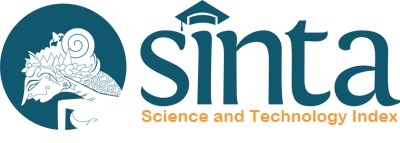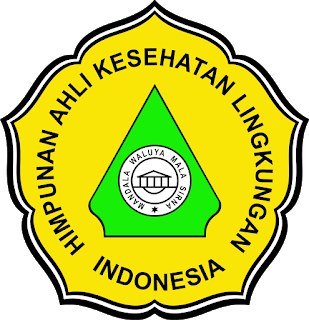Pemanfaatan Daun Salam (Syzygium Polyanthum Walp) Dalam Pengendalian Rayap
DOI:
https://doi.org/10.32382/sulo.v23i2.90Kata Kunci:
Rayap, Daun Salam, Minyak Atsiri, Metode SprayAbstrak
Rayap merupakan salah satu serangga yang tergolong ordo isoptera dengan memiliki 3 jenis kasta yaitu rayap kasta pekerja, rayap kasta prajurit, dan rayap kasta reproduksi. Rayap dapat ditemukan diberbagai ekosistem seperti perkebunan ataupun dipemukiman apalagi daerah tersebut merupakan daerah dengan kondisi iklim yang menjadi pendukung perkembangbiakkannya seperti di wilayah Indonesia. Rayap dapat hidup di tanah ataupun di kayu terutama kayu yang mengandung selulosa. Daun salam merupakan tanaman dengan nama ilmiah (Eugenia Polyantha W.) yang mengandung beberapa senyawa salah satunya minyak atsiri yang mudah menguap dan berwujud cairan yang mampu mematikan rayap dengan merusak sistem pernafasan dan dapat mengu-rangi nafsu makan pada rayap. Tujuan dari penelitian ialah untuk mengetahui manfaat dari air rebusan daun salam (Syzygium Polyanthum Walp) sebagai pestisida alami dalam mematikan rayap. Jenis penelitian yang digunakan bersifat eksperimen semu dengan menggunakan metode spray. Sampel dalam penelitian ini yaitu 20 ekor rayap yang dipaparkan menggunakan air rebusan daun salam dengan konsentrasi 40%, 45%, dan 50% dan kontrol yang dihitung kematiannya setiap 40 menit selama 120 menit sebanyak 3 kali perlakuan. Hasil penelitian menunjukkan persentase rata-rata kematian rayap menggunakan air rebusan daun salam pada konsentrasi 50% sebanyak 17 ekor (85%), pada konsentrasi 45% sebanyak 13 ekor (65%), pada konsentrasi 40% sebanyak 5 ekor (25%), dan pada kontrol tidak didapatkan kematian rayap atau tanpa pemberian air rebusan daun salam. Berdasarkan hasil penelitian air rebusan daun salam mampu mematikan rayap. Kesimpulan dari penelitian ini, air rebusan daun salam pada konsentrasi 40% dan 45% tidak dapat dikatakan mampu mematikan rayap dan 50% dapat dikatakan mampu mematikan rayap dengan persentase kematian 85%. Saran dari penelitian ini yaitu air rebusan daun salam dapat digunakan sebagai insektisida nabati yang dapat diterapkan masyarakat dengan menggunakan konsentrasi atau dosis 50% dari air rebusan daun salam.
Kata kunci : Rayap, Daun Salam, Minyak Atsiri, Metode Spray
Referensi
Astuti. (2013). Identifikasi, Sebaran Dan Derajat Kerusakan Kayu Oleh Serangan Rayap Coptotermes (Isoptera: Rhinotermitidae) Di Sulawesi Selatan. Skripsi, 1-41. (Online). http://repository.unhas.ac.id/id/eprint/8002/1/astuti%201-2.pdf. (Diakses pada tanggal 8 Januari 2023).
Aziz, Abdul, dkk. (2015). Aktivitas Antirayap Ekstrak Daun Orthosiphon sp., Morinda sp., dan Carica sp. Journal Ilmu Teknologi Kayu Tropis, 161175.(Online).http://ejournalmapeki.org/index.php/JITKT/article/vi ew/32. (Diakses pada tanggal 8 Januari 2023).
A Ismanto, dkk. (2021). Influence of jeringau (Acorus calamus Linn.) rhizome extract against dry-wood termites (Cryptotermes cynocephalus Light.). IOP Conference Series: Earth and Environmental Science, 1-7. (Online). https://ejournal.perpusnas.go.id/. (Diakses pada tanggal 8 Januari)
A Oksari , dkk. (2023). Potential of Dioscorea bulbifera L. as a bioinsecticide in controlling dry wood termites (Cryptotermes cynocephalus Ligh.) . IOP Conf. Series: Earth and Environmental Science, 1-9. (Online). https://sinta.kemdikbud.go.id/authors/profile/6770932.(Diakses pada tanggal 9 Januari 2023)
[BSN]. Badan Standarisasi Nasional. (2015). SNI 2405:2015. Tata cara pengendalian serangan rayap tanah pada bangunan rumah dan gedung paska konstruksi. Badan Standarisasi Nasional : Jakarta.(Online). https://docplayer.info/30072664-Sni-2404-2015- dan-sni-2405-2015-sebagai-wujud-iptek-yang-berkelanjutan-untukmendukung-infrastruktur-bidang-perumahan-dan-permukimanyang-handal.html. (Diakses pada tanggal 8 Januari 2023)
Erli, Evy Wardenaar & Muflihati. (2015). Uji Aktivitas Minyak Atsiri Daun Salam (Syzygium Polyanthum Walp) Terhadap Rayap Tanah (Coptotermes Curvignathus Holmgren) . Hutan Lestari, 286-292. (Online).https://jurnal.untan.ac.id/index.php/jmfkh/article/viewFile/10 650/10205. (Diakses pada tanggal 8 Januari 2023).
Farid, A. M. Miftah , Andi Nur Khalisah, Hamia, Masita & Ummi Chalsum. (2019). Efektivitas Daun Sirih (Piper betle L.) dan Air Leri Terhadap Mortalitas Rayap Tanah (Coptotermes sp.). Journal Fundamental Sciences,67-72. (Online). https://ojs.unm.ac.id/pinisi/article/view/9385. (Diakses pada tanggal 8 Januari 2023).
Irfan, Afrijal . (2019). Uji Efektivitas Beberapa Insektisida Nabati Dalam Mengendalikan Hama Rayap (Coptotermes Curvignathus H.) Di Laboratorium.Skripsi,1-31.(Online). http://repository.umsu.ac.id/bitstream/handle/123456789/731/SKRIPSI.pdf?sequence=1&isAllowed=y.(Diakses pada tanggal 8 Januari 2023).
Iswanto, Apri Heri. (2005). Rayap Sebagai Serangga Perusak Kayu Dan Metode Penanggulangannya. publish or perish, 1-6. (Online). https://repository.usu.ac.id/handle/123456789/933. (Diakses pada tanggal 8 Januari 2023)
Khan, Sana, dkk. (2017). Comparative transcriptome analysis reveals candidate genes for the biosynthesis of natural insecticide in Tanacetum cinerariifolium. BMC Genomics, 1- 13.(Online).https://bmcgenomics.biomedcentral.com/articles/10.118 6/s12864-016-3409-4. (Diakses pada tanggal 8 Januari 2023)
Mairawita, Herwina H, Rahman T & Janra M N. (2022). Diversity of Termite (Insecta: Isoptera) at the Forested Area of Universitas Andalas, Padang, West Sumatra, Indonesia. publish or perish, 1-6. (Online). https://iopscience.iop.org/article/10.1088/1755- 1315/1059/1/012085/pdf. (Diakses pada tanggal 8 Januari 2023)
Mutiara. (2017). BAB II Tinjauan Pustaka. Skripsi, 8-27. (Online). https://ejournal.perpusnas.go.id/. (Diakses pada tanggal 8 Januari) Nabu, Farah Diba & M. Dirhamsyah. (2015). Aktivitas Anti Rayap Minyak Atsiri Dari Kulit Jeruk Citrus nobilis var.microcarpa Terhadap Rayap Tanah Coptotermes Curvignathus Holmgren. Hutan Lestari, 133- 141. (Online). https://www.neliti.com/publications/10434/aktivitasanti-rayap-minyak-atsiri-dari-kulit-jeruk-citrus-nobilisvarmicrocarpa.(Diakses ada tanggal 8 Januari 2023)
Nuraeni, Yeni, Illa Anggraeni & Hani Sitti Nuroniah. (2009). Keanekaragaman Serangga Yang Berpotensi Hama. (Online). https://eprints.uai.ac.id/26/. (Diakses pada tanggal 8 Januari 2023)
Puspitasari, Lia & Suci Mareta. (2021). Karakterisasi Senyawa Kimia Daun Mint (Mentha sp.) dengan Metode. ilmu kefarmasian, 5-11. (Online). https://ejournal.istn.ac.id/index.php/saintechfarma/article/view/931. (Diakses pada tanggal 8 Januari 2023)
Rahman T, Herwina, Mairawita & Janra M N. (2022). Identification of Termites (Insecta: Isoptera) from Anthropogenic Area in Universitas Andalas Campus Complex, West Sumatra, Indonesia . publish or perish, 1-9. (Online). https://www.researchgate.net/publication/362167851_Identification_ of_Termites_Insecta_Isoptera_from_Anthropogenic_Area_in_Universitas_Andalas_Campus_Complex_West_Sumatra_Indonesia. (Diakses pada tanggal 8 Januari 2023)
Ramli & Denda Mahendra. (2019). Uji Efektivitas Ekstrak Daun Pepaya (Carica Papaya ) Dan Daun Babadotan (A Geratum Conyzoides) Terhadap Mortalitas Hama Walang Sangit (L Eptocorisa Oratorius) Pada Tanaman Padi Pandanwangi. publish or perish, 60-69. (Online).https://jurnal.unsur.ac.id/pro-stek/article/view/822. (Diakses pada tanggal 8 Januari 2023)
Savitri, Annisa, Ir. Martini & Sri Yuliawati. (2016). Keanekaragaman Jenis Rayap Tanah dan Dampak Serangan Pada Bangunan Rumah di Perumahan Kawasan Mijen Kota Semarang. Kesehatan Masyarakat, 100-105. (Online). https://ejournal3.undip.ac.id/index.php/jkm/article/view/11653. (Diakses pada tanggal 8 Januari 2023)
Sahani, Wahyuni, Hamsir, Inayah, Syamsuddin S, Andi Ruhban, dan Sulasmi. (2020). Pedoman Penulisan Karya Tulis Ilmiah. Makassar. Simbolon, Resna Irama, Yuliati Indrayani & Harnani Husni. (2015). Efektifitas Bioatraktan Dari Lima Jenis Tanaman Terhadap Rayap Tanah (Coptotermes Sp). Hutan Lestari, 40-46. (Online).https://jurnal.untan.ac.id/index.php/jmfkh/article/view/14482 . (Diakses pada tanggal 8 Januari 2023)
Zulyusri, Desyanti, Rosi Fitri Ramadhan. (2012). Keefektifan ekstrak daun carica papaya linn. denganmetode racun lambung untuk pengendalian rayap tanah coptotermes sp. (isoptera : rhinotermitidae). Zulyusri, Desyanti, Rosi Fitri Ramadhan, 145. (Online). https://www.neliti.com/publications/130274/keefektifanekstrak-daun-carica-papaya-linn-dengan-metode-racun-lambunguntuk-pe. (Diakses 9 Januari 2023)
Unduhan
Diterbitkan
Cara Mengutip
Terbitan
Bagian
PDF downloaded: 780






















